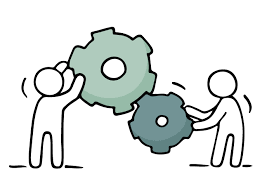Empathetic Communication: A Framework for Constructive Conflict Resolution
Conflict is an inherent aspect of human interaction, ubiquitous in various contexts including organizational settings, educational environments, and familial relationships. While the etiologies of conflict are multifaceted, its effective resolution is crucial for cultivating robust interpersonal dynamics and fostering positive social environments. This article posits that empathetic communication serves as a cornerstone for successful conflict management, exploring its theoretical underpinnings and offering practical strategies for its effective implementation within a framework informed by relevant communication theories.
I. Foundational Principles: Empathy and Active Listening as Cornerstones of Conflict Resolution
Empathy, defined as the capacity to understand and share the feelings of another, forms the bedrock of effective conflict resolution. This concept aligns with the social-cognitive theory, emphasizing the importance of perspective-taking in understanding others' behaviors and motivations. By acknowledging and validating the emotions of all involved parties, empathy fosters a climate of trust and openness. Active listening, a critical component of empathetic communication, necessitates undivided attention to the other person's perspective. This involves minimizing external distractions and genuinely absorbing both verbal and nonverbal cues, adhering to principles outlined in the communication accommodation theory. Such engagement creates a secure space conducive to open and honest dialogue, paving the path towards mutually beneficial resolutions.
II. Enhancing Understanding Through Nonverbal Communication and Reflective Responses
Nonverbal communication, encompassing elements such as eye contact and appropriate body language, significantly enhances empathetic communication. These nonverbal cues, as highlighted by the theory of nonverbal communication, signal genuine interest and attentiveness, reinforcing commitment to understanding the other person’s viewpoint. Reflective responses, such as paraphrasing and summarizing the speaker's message, further demonstrate active listening and comprehension. This technique, rooted in Rogerian therapy, helps validate the other person's feelings and ensures mutual understanding. For example, instead of a simple response, a statement like, "If I understand correctly, your frustration stems from a perceived lack of recognition for your contributions," clarifies understanding and validates the other party’s emotions.
III. Addressing Challenges: Mitigating Assumptions and Managing Emotions
Assumptions and premature conclusions pose significant obstacles to effective conflict resolution. Instead of making presumptions, employing open-ended questions facilitates clarification and comprehensive understanding of the situation. This approach is consistent with the principles of solution-focused brief therapy, which emphasizes identifying the desired outcome rather than focusing on the problem itself. Simultaneously, emotional intelligence, as defined by Goleman, becomes paramount. Emotional intelligence equips individuals to manage their emotions effectively while empathizing with others, thereby promoting calm and rational responses during conflict. This facilitates a more productive and less emotionally charged interaction.
IV. Constructive Communication Strategies: "I" Statements and Patience
Utilizing "I" statements is crucial for expressing thoughts and feelings constructively, avoiding blame or attack. For example, "I feel hurt when you speak to me in that tone" is more effective than "You always talk to me disrespectfully." This approach aligns with principles of assertive communication, allowing for the expression of personal needs without aggression. Patience is equally crucial, as rushing the process can hinder resolution and leave lingering resentment. Sufficient time must be allowed for all parties to fully express their concerns and perspectives.
V. Building Bridges: Fostering Respect, Identifying Common Ground, and Promoting Collaboration
Respecting diverse viewpoints is essential. Dismissing or interrupting others undermines trust and openness, hindering effective communication. Actively seeking common ground and shared interests can bridge divides and foster a sense of unity. This aligns with the principles of integrative negotiation, which focuses on finding mutually beneficial solutions. Collaborative brainstorming for solutions promotes a win-win outcome, where all parties feel heard and valued. Employing positive language, avoiding blame, and focusing on collaborative problem-solving creates a more constructive atmosphere.
VI. Continuous Improvement: Learning, Reflection, and Ongoing Development
Conflict resolution is an iterative process demanding ongoing commitment. Embracing feedback, reflecting on successful strategies and areas for improvement, and continuously refining one's approach are crucial. Integrating empathy into everyday interactions, beyond conflict resolution, can prevent disagreements from escalating. Empathy transcends being merely a tool for conflict resolution; it serves as a foundation for building stronger, healthier relationships. The concept of continuous improvement aligns with the principles of Kaizen philosophy, where continuous small changes lead to overall improvement. This continuous learning process strengthens one's capacity for successful conflict resolution.
Conclusion and Recommendations
Empathetic communication is indispensable for successful conflict resolution. By incorporating active listening, utilizing effective nonverbal communication, employing reflective responses, and cultivating emotional intelligence, individuals can foster an environment of understanding and compassion. Further research could explore the effectiveness of different empathetic communication techniques across various cultural contexts and conflict types. The application of these strategies within organizational settings, for example, through conflict management training programs, could significantly enhance workplace harmony and productivity. The emphasis should be placed on developing empathy not just as a reactive skill for resolving conflict but as a proactive approach to building positive interpersonal relationships. The long-term impact extends beyond immediate conflict resolution to fostering healthier, more collaborative environments.
Reader Pool: How might the principles of empathetic communication, as discussed in this article, be effectively integrated into conflict resolution training programs for different professional settings?



No comments yet. Be the first to share your thoughts!